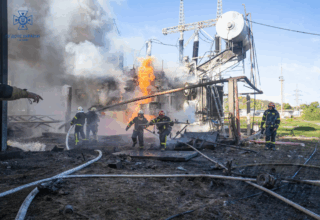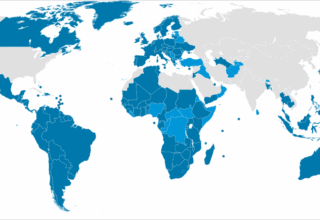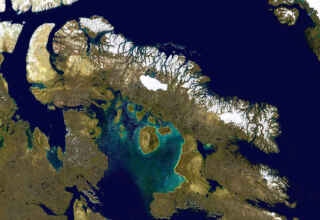
The Twin Towers attacks on the United States made Afghanistan an important foreign policy concern of the US and started a military campaign against the Al-Qaeda and the Taliban government. During the period of about more than eighteen years, the US has lost 2,400 military personnel in Afghanistan as of April 30, 2020. The US has also spent $137 billion for the process of reconstruction in Afghanistan (Tariq, Rizwan, Ahmad, 2020). Former US President Trump and Joe Biden announced, this year (2021), his country’s decision regarding the final and unconditional withdrawal of US military forces from Afghanistan, stressing that this process should be completed on the anniversary of the September 11 attacks (Ullah Bahadur, 2021). The withdrawal ends the longest war the US has ever fought, 20 years after it began in 2001. This will have great impact on the security paradigm of the regional as well global politics, since main focus of the world rested upon the counter-terrorism strategy and strengthening security system. Yet the departure of foreign troops does not signify an end to Afghanistan’s conflict, now largely dependent on intra-national dynamics. The Biden administration, with the realization that U.S. military presence is not the answer to achieving lasting peace in Afghanistan, has decided to make a clean break with previous strategy by implementing a non-conditions-based withdrawal deadline. It is precisely at the national level, and more particularly on the peace negotiations, governance and security, terrorism, regional dynamics, great power competition, human rights, humanitarian issues, and development, that this withdrawal will have a considerable impact. Now, the main concern of the US and its coalition partners is to bring political stability and peace in Afghanistan after they leave the country within a specific time frame.
According to a Brooking’s report, at least four broad scenarios for Afghanistan in the next three to five years are conceivable. First, a protracted and fragmented civil war, but Taliban is simply too militarily strong and adroit in political bargaining for such an outcome. Or a substantial preservation of the existing political dispensation. Third, a power-sharing deal between the Taliban and key Afghan powerbrokers without substantially greater bloodshed which is the option desired by the United States. Finally, a rapid Taliban gains on the battlefield and in political dealmaking, which seems one of the most plausible options to date (Felbab-Brown, 2021). This article will therefore focus on providing an analysis of the national prospects that can be expected in Afghanistan after the departure of the United States, and whether it is really a matter of letting peace take care of itself or simply of stopping paying for an endless war.
Context and prospects for the peace agreement
After more than a year of negotiations, U.S. and Taliban representatives signed a bilateral agreement on February 29, 2020, agreeing to two “interconnected” guarantees: the withdrawal of all U.S. and international forces by May2021, and unspecified Taliban action to prevent other groups, including Al Qaeda, from using Afghan soil to threaten the United States and its allies (Thomas, 2021). In the months following the agreement, the United States pointed out that the Taliban was not holding up its end of the bargain, particularly with regard to Al-Qaeda (Reuters, 2020). For example, in its report on the final quarter of 2020, the Office of the Inspector General for the Department of Defense relayed an assessment from the Defense Intelligence Agency (DIA) that the Taliban maintain ties to Al Qaeda and that some AQ members are “integrated into the Taliban’s forces and command structure” (Operation Freedom’s Sentinel). U.S. officials also described increased Taliban violence as “not consistent” with the agreement (TOLO News, 2020). Although no provisions in the publicly available agreement address Taliban attacks on U.S. or Afghan forces, the Taliban reportedly committed not to attack U.S. forces in non-public annexes accompanying the accord.
Joe Biden’s decision to withdraw troops is reminiscent of Barack Obama’s decision in 2011 to withdraw US troops from Iraq. However, we are reminded of the disastrous repercussions this may have had for the country, notably the meteoric rise of ISIS and the gradual plunge of Iraq into chaos (Khalilzad, 2016). The withdrawal of US forces from Afghanistan comes at a very difficult time, as the Afghanistan-peace process faces successive pitfalls, as well as violence in the country is escalating significantly, which means that the country may be exposed to several future dangers, at a time when the United States of America no longer has a desire to bear the burdens of the security presence in Afghanistan, in light of its changing political and strategic priorities. Acts of violence have increased in the country, as some reports estimated terrorist attacks in various provinces of Afghanistan during the first three months of 2021 at about 60 attacks, especially with the stalled peace process Afghani, between the internationally recognized government and the “Taliban” movement (Bahadur, ibid).
According to the agreement, the Taliban will “not allow any of its members, other individuals or groups, including al-Qaeda to use the soil of Afghanistan to threaten the security of the United States and its allies,” (USDS, 2020) but they have failed to break ties with al-Qaeda and other terrorist groups. Although the Taliban have technically participated in the Intra-Afghan Negotiations, their sincerity in reaching a political compromise with the Afghan government remains unclear. In part, Biden’s decision is a conditions-based response to the Taliban’s failed compliance with the agreement’s conditions. However, America’s new deadline is absolute, and withdrawal appears to be no longer contingent on the Taliban’s adherence to conditions outlined in the U.S-Taliban Agreement.
Intra-Afghan Negotiations
Intra-Afghan negotiations began in September 2020 with the goals of establishing a comprehensive peace settlement among Afghans. Major negotiating issues include reducing violence and establishing a future governance structure for the Afghan state (Thomas, ibid). Although the Afghan government has once again reiterated its commitment to making an end to the fighting and the security of its people a top priority, it is not clear that this is the case, the Taliban remain determined to secure an agreement on the structure of the Afghan state before any ceasefire discussions begin (Putz, 2020). The Biden administration has insisted that it will put “full weight” into diplomatic effort to reach a peace agreement between the Afghan government and the Taliban. However, it cannot be said that this sustained diplomatic effort has been a success, as it has not produced any results. Furthermore, the Taliban are currently refusing to participate in any negotiations until the withdrawal of foreign forces is complete (Shalizi, 2021). This negotiation process, if it is to show anything, is the domination of the Taliban, which, moreover, is not the only one, and therefore have demonstrated little interest in the compromise or power-sharing, for which American negotiators have pressed. In a recent speech, the Taliban’s deputy leader, Sirajuddin Haqqani stated that “No mujahid ever thought that one day we would face such an improved state, or that we will crush the arrogance of the rebellious emperors and force them to admit their defeat at our hands. Fortunately, today, we and you are experiencing better circumstances” (Nossitier, 2021). The most likely scenario in the future is that the Taliban will gradually gain the upper hand in the negotiations, without ever reaching a compromise with the Afghan state, which would result in the continuation of this “eternal war”.
The withdrawal of foreign troops and other sources of assistance will weaken the Afghan government and undermine capabilities of the Afghan National Defense and Security Forces (ANDSF) in countering Taliban influence, resulting in a loss of potential influence and legitimacy (Dobbins, Cambell, Mann, Miller, 2019). A weakened Afghan government will embolden the Taliban and increase the risk of state collapse. The U.S.-led NATO advisory mission has improved the technological capabilities of the ANDSF but hasn’t fully weaned its dependency on international advisors for critical support and sustainment functions. A withdrawal of foreign troops would give the Taliban a slight military advantage over the ANDSF. The presence of U.S. and NATO coalition forces has prevented the Taliban from gaining control of Afghanistan’s largest cities, Kabul and Kandahar. After withdrawal, these cities are more likely to fall to the Taliban.
One of the risks hanging over the withdrawal of American troops is therefore the rise in power of the Taliban, which could lead to the emergence of a new regional terrorist organisation in the long term. A non-conditions-based U.S. withdrawal is likely to empower terrorist and extremist groups who see U.S. withdrawal as clear sign of victory. Without crucial human intelligence, surveillance and direct-action capabilities, the U.S. may lose the ability to closely monitor expansionist activity by various terror groups in Afghanistan. An emboldened al-Qaeda or the Islamic State may be able to reconstitute, posing significant risks to Afghan civilians, neighboring countries, and the West (Mir, 2020).
The relative stability western troops have been able to bring to Afghanistan has caused significant collective action problems regarding development and counterterrorism assistance. Afghanistan’s neighbors will be forced to fill security gaps left by the withdrawal of US and NATO forces. Furthermore, Afghanistan’s geo-strategic location serves as a division of power between China, Iran, Russia, India, and Pakistan. In the international coalition’s absence, Afghanistan could become a playing field for great power rivalries (Brenner & Wallin, 2021).
Regional influence of the withdrawal
Regional powers and the involvement of the international community are very important to the conflict in Afghanistan. With NATO forces out of the way, India and Pakistan may intensify their competition for influence in Afghanistan. Both countries have significant stakes in Afghanistan, as its stabilization is integral to regional security in South Asia. India is the largest regional contributor of development assistance to Afghanistan and aims to cultivate relations with the country as a natural gas partner and ally against Pakistani Islamic militants (Grishin & Nasratullah, 2020). Pakistan is largely focused on undermining India’s influence in Afghanistan and growing the influence of the Inter-Services Intelligence Directorate (ISI), Pakistan’s national intelligence agency which has known links to the Taliban’s Haqqani network (Chaudhuri, et Shende, 2020). According to the US officials, the terrorists have their sanctuaries in Pakistan but that charge has been rebutted by Pakistan saying that the Taliban have increased their influence in Afghanistan and hence has strengthened their territorial control over some areas (Clayton, 2018). Instability in Afghanistan would have a great impact on the security paradigm of Pakistan, which has been struggling hard against themilitants and insurgents on its own for long and has conducted many military operations against the insurgents with the last one as Operation Zarb-e-Azabthat brought about fruitful results to Pakistan (Tariq, 2018). Relations between the two countries have already deteriorated with the many Afghan migrants on Pakistani soil. Pakistan’s security establishment, fearful of strategic encirclement by India, apparently continues to view the Afghan Taliban as a relatively friendly and reliably anti-India element in Afghanistan. India’s diplomatic and commercial presence in Afghanistan and U.S. rhetorical support for it exacerbates Pakistani fears of encirclement. The role of Pakistan is very central to the process of peace and stability in Afghanistan, which fact is also admitted by the US and allied forces. Without the support of Pakistan, it is very difficult to facilitate negotiations either between the US and Taliban or between the Taliban and Afghan government (Tariq, 2020).
Afghanistan may also develop cordial relations with China owing to the growing popularity of China in Asia and at the global level. China’s priority concern in Afghanistan is the spillover of insecurity and radicalization. Specifically, Beijing remains concerned that Afghanistan will become a haven for Uyghur separatists and threaten stability in the Xinjiang province. In 2018, China assisted the Afghan military with the construction of a mountain brigade in the north. In 2019, China built a military base for its own use in Tajikistan near the Wakhan Corridor, a strategic route connecting Afghanistan to China (Azad, 2021). It is therefore likely that China will continue to strengthen the Afghan defence infrastructure in order to halt the advance of the Taliban, which it does not want to see in power. As Afghanistan’s largest foreign economic investor, Beijing’s economic opportunity in the country relies thus heavily on peace and security. China already has land use contracts with Afghanistan and is waiting for the complete withdrawal of the US to implement them. There are also plans to include the country in the new Belt and Road Initiative (BRI), the massive and priority objective of Chinese government concerning Foreign Affairs. So if peace is to be negotiated, it will be with China.
During the past years financial and material support to the Taliban have been observed partly from Iran. Throughout the Intra-Afghan peace process Tehran has adopted the policy of “strategic hedging” to protect its interests in Afghanistan. Of course, Iran is not totally aligned with the Taliban, either religiously or in terms of demands, and it is more of a strategic partnership. Simultaneously, Tehran won support from Afghanistan’s Tajik and Hazara populations. By maintaining good relations with both the Afghan government and Taliban, Iran has prepared itself for a variety of outcomes (Brenner & Wallin, ibid). Iran also intends to put an end to the outbreaks of violence on the border between the two countries. With international forces gone, Iran will likely intervene more heavily in Afghan affairs, the United States no longer acts as a thorn in its side.
Financial support for the Taliban also comes from Russia. The main justification, also mobilised by Iran, is to fight against the Islamic State by preferring the Taliban, fighting evil with a lesser evil in short. Secondarily, Moscow aims to actively fight against U.S. interests in a type of zero-sum strategy. Russia views Afghanistan as an arena of competition with the West and will likely expand its geopolitical interests in the region once U.S. and NATO forces make a complete withdrawal (ibid). Since Intra-Afghan negotiations began Moscow has maintained relations with a variety of stakeholders to ensure a leading role in any post-conflict political settlement. Building a cooperative relationship with the Taliban and other political parties will ensure that Moscow’s interests are secured in a post-U.S. Afghanistan (ibid).
The days after: Peace or Chaos?
Afghan officials have sought to downplay the detrimental impact of the U.S. troop withdrawal while emphasizing the need for continued U.S. financial assistance to Afghan forces (Rahimi, 2021). U.S. military officials have said various options, including remote training (which has largely been in place since the onset of the COVID-19 pandemic) or training Afghan personnel in third countries, are under consideration to continue supporting Afghan forces. Beyond the immediate effects on Afghan forces and their capabilities, a full U.S. military withdrawal may have second-or third-order effects on the fragile Afghan state, especially when it comes to local perceptions of U.S. intentions and of the impact of U.S. withdrawal on Afghan forces. Some Afghans, recalling the complex, multi-sided civil war of the 1990s, have suggested that their communities may pursue more independent courses of action if the Afghan government is unable to provide security in the context of the U.S withdrawal (Engel Rasmusse & Amiri, 2020).
Operations led by the Taliban, whose strength has been estimated at 60,000 full-time fighters, against Afghan government forces continue, including numerous attacks nationwide after the U.S. withdrawal began on May 1. A major offensive by the Taliban in May 2021 prompted the United States to launch airstrikes in support of Afghan government forces in southern Afghanistan’s Helmand Province. The group controls or contexts more territory in 2021 than at any point since 2001 by many measures (UNSC, 2021). In recent years, about 50 percent of the Afghan state budget and 90 percent of its military and police costs have been borne by international donors. Reductions in such funding will have a direct impact on the capacity of the government and the combat capabilities of its armed forces. Governance structures in Afghanistan consist of overlapping layers of formal, centralized de jure authorities; regional power bro-kers with mixed official and informal authority; and varied de facto mechanisms for organizing and regulating social behaviour at the local level (Dobbins et al., ibid). This will deprive the central government of this capacity and disrupt the equilibrium of central versus regional power that has settled into place since the U.S. intervention. In addition to the decline of the central government, the Afghan economy will also decline. In Kabul, the technocrats will staff the ministries in much the same way as they have for the past decade, but policies, military orders, and money will likely reach a far smaller part of the country than they have in the past.
The Taliban will consolidate its hold on the rural, Pashtun-dominated south and east; continue its current aggressive push into the non–majority-Pashtun north and west of the country; and begin concerted efforts to take and hold urban areas, particularly provincial capitals. U.S. air support, including American forward air controllers on the ground, has been critical in denying the Taliban control of major population centers (ibid). The growing strength of former president Hamid Karzai and his allies, which may include the Kandahar security apparatus of the recently assassinated Abdul Raziq, could make the southeast and its gateway to Kabul a more contested area than the Taliban anticipates. On the other hand, the splitting of Tajik and Uzbek communities by recent infighting and by the Taliban may mean that the north and west are significantly more contested than in the past. Thus, the future map of political control may not precisely resemble the ethnic map (ibid). In the aftermath of the troop withdrawal, Kabul will not be the only city to be contested. In such a multi-sided conf lict, the fighting will become more urban than rural, more stand-and-fight than hit-and-run, and more reliant on heavy weaponry likely to cause civilian deaths and major damage to basic infrastructure, much of it financed by the United States.
The Taliban seized the key district of Panjwai, in their former stronghold of Kandahar province, on Sunday 4 July, after night-time fighting against Afghan forces. The Taliban’s latest capture comes as the full withdrawal of US troops approaches. The capture of Panjwai by the Taliban came two days after the departure of US and NATO troops from Bagram, their largest base in Afghanistan, located 50 kilometres north of Kabul and the hub of coalition operations against the Taliban for the past 20 years (Le Monde, 2021). “The Taliban seized the police headquarters in the district and the governorate building” after a night of fighting, the governor of Panjwai district, told Hasti Mohammad. The chairman of the Kandahar provincial council, Jan Khakriwal, confirmed the fall of Panjwai, while accusing Afghan forces “in sufficient numbers” of “intentionally withdrawing” (ibid). Fighting has been raging for weeks in several Afghan provinces and the Taliban claim to control around 100 of the country’s nearly 400 districts.
Total international withdrawal from Afghanistan will likely be followed by a reduction in foreign assistance and subsequent civil war, further deteriorating an already dire humanitarian situation and undermining development progress. Afghanistan has the second largest refugee population in the world, and four million people are internally displaced (Brenner & Wallin, ibid). A total withdrawal of troops and a halt to funding can only lead, even in the short term, to an increase in this devastating humanitarian crisis. Mounting violence has escalated Afghanistan’s brain drain as the country’s young and educated seek safer futures abroad. 2021 has seen a campaign of assassinations in Kabul targeting journalists, civil servants, judges, and activists (Smith & Mengli, 2021). Cuts in donor support to Afghanistan have already begun. As the U.S. further decreases its security and economic assistance to Afghanistan, other countries are unlikely to fill funding gaps (Brenner & Wallin, ibid).
To remedy this situation, the following recommendations are made:
– Protecting security gains and maintaining a rapid and effective emergency response force. The U.S. must protect its embassy and diplomatic personnel from attacks, and all their allies in the region, as they will soon become priority targets for the Taliban and their foreign allies. The Biden administration should raise the Special Immigrant Visa (SIV) cap further and dedicate more resources to processing SIV applicants before the September 11th withdrawal deadline. Key concerns of U.S and NATO troop withdrawal stem from the loss of on-the-ground intelligence, surveillance, and direct-action capabilities. The U.S. should work with countries in the region to assure the ability to bring such a force to bear on critical threats.
– Continue targeted assistance to the Afghan Government and strengthen oversight capabilities to prevent corruption, in order to prevent state failure and the backsliding of progress. Additionally, NATO has indicated it wishes to continue training members of the Afghan military at a location outside of the country. But is likely to face challenges in terms of security, transportation logistics, capacity, and an increasing probability of desertion. NATO should prepare for these eventualities.
– Develop emergency partnerships with existing allies on the ground and neighbouring countries which, as we have seen, will be crucial in dealing with future instabilities in the country. Central Asia has a complicated history hosting Western troops. U.S. and NATO forces occupied bases in Uzbekistan or Kazakhstan from 2001-2014 during the U.S.-led military campaign in Afghanistan. However, Russian and Chinese influence soured relations and ultimately forced U.S. and NATO troops from Uzbek and Kazakh bases (Brenner & Wallin, ibid).
Bibliography
Azad, S. 2020 September 22. “China’s Stake in the Afghan Peace Process.” The Diplomat. Available at: https://thediplomat.com/2020/09/chinas-stake-in-the-afghan-peace-process/
Brenner, C. & Wallin, M. 2021. Preparing for the Consequences of Withdrawal from Afghanistan. American Security Project.
Chaudhuri, R; Shende, S. 2020. “Dealing With the Taliban” India’s Strategy in Afghanistan After U.S. Withdrawal.” Carnegie Endowment for International Peace.
Clayton, T. 2018, February 21. P. M. Officials, Interviewer. Rawalpindi, Punjab, Pakistan.
Dobbins, J., Campbell, J., Mann, S., Miller, L. 2019. “Consequences of a Precipitous U.S. Withdrawal from Afghanistan.” RAND Corporation.
Engel Rasmussen, S. & Ehsanullah A. 2020. “Afghanistan Braces for the Worst as U.S. Troop Withdrawal Accelerates,” Wall Street Journal, November 19, 2020; “Atta Noor threatens to ‘take action’ against security situation,” Ariana News.
Felbab-Brown, V. 2021. Afghanistan after American withdrawal: Part 1 — Internal factors shaping developments. Brookings institute.
Grishin Oleg E., Nasratullah, R. 2020. “Importance of Afghanistan for Regional Security in South and East Asia.” Post-Soviet Issues 7 no. 1.
KhalilzadZ. The invoy: Form Kabul to the white house my journey a turbulent world. St. Martins press 2016.
Mir, A. 2020. “Afghanistan’s Terrorism Challenge: The Political Trajectories of Al-Qaeda, the Afghan Taliban, and the Islamic State.” Middle East Institute.
Nossiter, A. 2021 March 30. “The Taliban Think They Have Already Won, Peace Deal or Not.” The New York Times. Available at: https://www.nytimes.com/2021/03/30/world/asia/taliban-victory-afghanistan.html?smid=tw-share&mc_cid=f4bd45cd8f&mc_eid=UNIQID
Operation Freedom’s Sentinel: Lead Inspector General Report to the United States Congress, October 1,2020 -December 31, 2020,released February 17, 2021.
Putz, C. 2020 December 3. “Procedure Set, Intra-Afghan Talks to Move on to Setting an Agenda.” The Diplomat.
Rahimi, Z. 2021 April 26. “ANDSF Showcases Air Force as Country Braces for US Pullout,” TOLOnews..
Reuters. 2020 May 5. Taliban not living up to its commitments, U.S. Defense Secretary say. Reuters. Available at: https://www.reuters.com/article/us-usa-afghanistan-military-idUSKBN22H2XH
Shalizi, H. 2021 April 20. “U.S.-backed Afghan peace conference in Turkey postponed over Taliban no-show –sources.” Reuters. Available at: https://www.reuters.com/world/middle-east/us-backed-afghan-peace-conference-turkey-postponed-over-taliban-no-show-sources-2021-04-20/.
Smith, S. & Mengli, A. 2021 January 24. “Wave of killings targets Afghan female judges, journalists, intellectuals.” NBC News. Available at: https://www.nbcnews.com/news/world/wave-killings-targets-afghan-female-judges-journalists-intellectuals-n1255302
Tariq, M. 2018. An Analysis of Insurgency in Afghanistan (2001-2016). Hafeezullah, Ed. Global Social Sciences Review, III(II), 131-145.Tariq, M. (2015). Dynamics of NATO Drawdownrom Afghanistan and Future Implications. R. Sultan, Ed. FWU Journal of Social Sciences, 1(1).
Tariq, M. 2020. The Borderland Theory in the context of Pak-Afghan Border. D. M. Idrees, Ed. Sir Syed Journal of Education and Social Sciences, 3(1).
Tariq, M., Rizwan, M., Afmad, M. 2020. US Withdrawal from Afghanistan: Latest Development and Security Situation (2020). Sir Syed Journal of Education &Social Research vol. 3 (2).
Thomas, C. 2021. Afghanistan: Background and U.S. Policy:In Brief. Congressional Research Service.
TOLO News. 2020 October 13. Violence ‘Not Consistent’ with US-Taliban Deal: US Envoy. TOLO News. Available at: https://tolonews.com/afghanistan-167017
U.S. Department of State. “Agreement for Bringing Peace to Afghanistan between the Islamic Emirate of Afghanistan which is not recognized by the United States as a state and is known as the Taliban and the United States of America.” 29 Feb. 2020. https://www.state.gov/wp-content/uploads/2020/02/Agreement-For-Bringing-Peace-to-Afghanistan-02.29.20.pdf. p. 1-4. Accessed May 2021.
Ullah Bahadur, M. 2021. Ramifications and repercussions of the US withdrawal from Afghanistan. International Journal of Multidisciplinary Trends.
UN Security Council. 2021. Twelfth report of the Analytical Support and Sanctions Monitoring Team submitted pursuant to resolution 2557 (2020) concerning the Taliban and other associated individuals and entities constituting a threat to the peace and stability of Afghanistan, United Nations Security Council, (S/2021/486).
By Mahmoud Refaat: The European Institute for International Law and International Relations.















